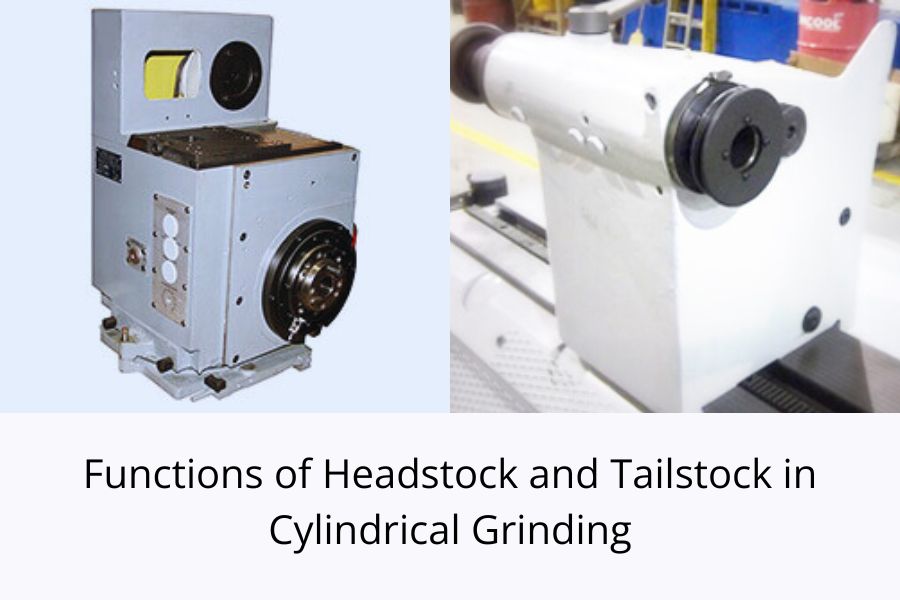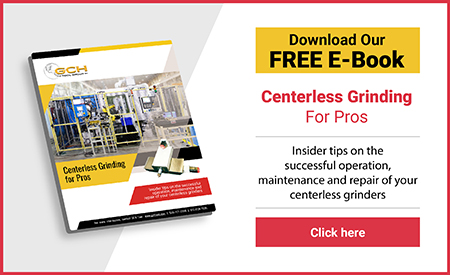Cylindrical Grinder 101: Understanding the Role of Headstock and Tailstock

A cylindrical grinder is designed to reshape the exterior of objects into a precise cylindrical silhouette. The headstock and tailstock of these specialized grinding machines, commonly referred to as OD grinders or OD grinding machines, play pivotal roles that both beginners and seasoned machinists must master. These fundamental components are crucial for achieving unparalleled precision in every workpiece. The headstock holds the workpiece firmly in place, ensuring it rotates consistently at the desired speed, while the tailstock supports the opposite end, providing stability and preventing any wobbling or misalignment.
Together, they enable machinists to execute flawless cylindrical surfaces, demonstrating that understanding the symbiotic relationship between the headstock and tailstock for cylindrical grinders is essential for anyone looking to excel in this particular grinding style.
The Headstock: The Powerhouse of Rotation
Let’s first examine the role of the headstock in cylindrical grinding. An OD grinder headstock serves as the driving force behind the grinding process. It houses several vital elements that enable the workpiece to rotate at the desired speed and contribute significantly to achieving the required finish.
Key Components:
- Motor: The motor provides the necessary power to rotate the workpiece spindle. Its speed can be adjusted to match the grinding wheel specifications and the material being worked on.
- Spindle: This hollow shaft acts as the axis for the workpiece. It holds the chuck or other work-holding device that firmly secures the piece during grinding.
- Bearings: High-precision bearings support the spindle rotation, minimizing any runout or wobble that could affect the grinding accuracy.
- Speed Control System: This system allows for variable speed adjustments of the spindle, ensuring optimal grinding conditions for different materials and applications.
Functions of the Headstock:
- Rotation: The headstock provides the essential rotary motion to the workpiece, allowing the grinding wheel to precisely remove material across the cylindrical surface.
- Speed Control: Precise speed control ensures optimal grinding efficiency and surface finish. Different materials require specific grinding wheel speeds to achieve the desired results.
- Workpiece Centering: The headstock plays a crucial role in ensuring the workpiece is centered accurately on the grinding wheel. Proper centering minimizes eccentricity (deviation from perfect roundness) and guarantees a consistent finish.
The Tailstock: Providing Support and Stability
While the headstock focuses on rotation, the role of the tailstock in cylindrical grinding is to offer crucial support and stability to the opposite end of the workpiece.
Key Components:
- Quill: This movable sleeve houses an OD grinder tailstock’s center, which provides a point of contact and support for the workpiece.
- Tailstock Center: This pointed or live center (rotating) provides precise support for the opposite end of the workpiece, ensuring proper alignment and preventing deflection during grinding.
- Feed Mechanism: The tailstock feed mechanism allows for controlled movement of the quill along the machine bed. This enables precise positioning of the workpiece relative to the grinding wheel.
Functions of the Tailstock:
- Workpiece support: The tailstock center provides additional support for longer workpieces, preventing them from sagging or deflecting under their own weight during the grinding process. This ensures consistent grinding pressure and maintains dimensional accuracy.
- Centering and Alignment: The tailstock plays a vital role in precisely aligning the workpiece with the grinding wheel. This is particularly crucial for grinding long, slender workpieces where even slight misalignment can lead to significant errors.
- Taper Grinding: By adjusting the tailstock center relative to the headstock center, the operator can achieve tapered grinding on the workpiece. This technique allows for the operator to create specific conical shapes.
Optimizing Performance: Tips for Effective Use
- Regular maintenance: Regularly inspect and lubricate the bearings in both the headstock and tailstock to minimize friction and ensure smooth operation.
- Alignment checks: Periodically verify the alignment of the headstock and tailstock centers to prevent errors in workpiece centering.
- Work-Holding Selection: Choose the appropriate chuck or work-holding device based on the workpiece size and shape for optimal grip and stability.
- Tailstock Pressure: Apply the correct amount of pressure from the tailstock center to prevent the workpiece from moving excessively during grinding.
Choose GCH Tool Group for OD Grinder Headstocks and Tailstocks
When it comes to achieving precision and excellence in grinding, the significance of properly understanding and maintaining both the headstock and tailstock cannot be overstated. These critical components play an indispensable role in the overall functionality and accuracy of OD/ cylindrical grinding machines, making their care and application essential for optimal performance.
GCH Tool Group Inc., recognized as a leading supplier in the realm of OD grinder parts and components, offers unparalleled expertise and a comprehensive inventory to ensure your grinding equipment operates at its best. We carry a wide selection of new spare parts for Cincinnati, Norton, Landis, Toyoda, Brown & Sharpe and Studer OD grinders, among others.
Contact us today for your headstock and tailstock needs.

